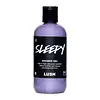What's inside
What's inside
 Key Ingredients
Key Ingredients

No key ingredients
 Benefits
Benefits

 Concerns
Concerns

 Ingredients Side-by-side
Ingredients Side-by-side

Water
Skin ConditioningSodium Laureth Sulfate
CleansingCocamidopropyl Betaine
CleansingIsopentane
SolventSorbitol
HumectantParfum
MaskingIsopropyl Palmitate
EmollientIsobutane
PEG-120 Methyl Glucose Dioleate
EmulsifyingGlycerin
HumectantButylene Glycol
HumectantNelumbo Nucifera Flower Extract
Skin ConditioningZiziphus Jujuba Fruit Extract
Skin ConditioningSodium Benzoate
MaskingPotassium Sorbate
PreservativeSodium Chloride
MaskingPEG-40 Hydrogenated Castor Oil
EmulsifyingCitric Acid
BufferingGuar Hydroxypropyltrimonium Chloride
Skin ConditioningTocopherol
AntioxidantAlpha-Isomethyl Ionone
PerfumingBenzyl Salicylate
PerfumingHexyl Cinnamal
PerfumingLinalool
PerfumingWater, Sodium Laureth Sulfate, Cocamidopropyl Betaine, Isopentane, Sorbitol, Parfum, Isopropyl Palmitate, Isobutane, PEG-120 Methyl Glucose Dioleate, Glycerin, Butylene Glycol, Nelumbo Nucifera Flower Extract, Ziziphus Jujuba Fruit Extract, Sodium Benzoate, Potassium Sorbate, Sodium Chloride, PEG-40 Hydrogenated Castor Oil, Citric Acid, Guar Hydroxypropyltrimonium Chloride, Tocopherol, Alpha-Isomethyl Ionone, Benzyl Salicylate, Hexyl Cinnamal, Linalool
Sodium Laureth Sulfate
CleansingGlycerin
HumectantSodium Cocoamphoacetate
CleansingGoat Milk
Skin ConditioningOdontioda Lavender Lace Flower Extract
HumectantLauryl Betaine
CleansingParfum
MaskingLavandula Angustifolia Oil
MaskingBenzoin Ethyl Ether
Dipteryx Odorata Seed Extract
MaskingCananga Odorata Flower Oil
MaskingChondrus Crispus Extract
Skin ConditioningTitanium Dioxide
Cosmetic ColorantBenzyl Benzoate
AntimicrobialCoumarin
PerfumingLimonene
PerfumingLinalool
PerfumingCI 77007
Cosmetic ColorantSodium Laureth Sulfate, Glycerin, Sodium Cocoamphoacetate, Goat Milk, Odontioda Lavender Lace Flower Extract, Lauryl Betaine, Parfum, Lavandula Angustifolia Oil, Benzoin Ethyl Ether, Dipteryx Odorata Seed Extract, Cananga Odorata Flower Oil, Chondrus Crispus Extract, Titanium Dioxide, Benzyl Benzoate, Coumarin, Limonene, Linalool, CI 77007
Alternatives
Ingredients Explained
These ingredients are found in both products.
Ingredients higher up in an ingredient list are typically present in a larger amount.
Glycerin is already naturally found in your skin. It helps moisturize and protect your skin.
A study from 2016 found glycerin to be more effective as a humectant than AHAs and hyaluronic acid.
As a humectant, it helps the skin stay hydrated by pulling moisture to your skin. The low molecular weight of glycerin allows it to pull moisture into the deeper layers of your skin.
Hydrated skin improves your skin barrier; Your skin barrier helps protect against irritants and bacteria.
Glycerin has also been found to have antimicrobial and antiviral properties. Due to these properties, glycerin is often used in wound and burn treatments.
In cosmetics, glycerin is usually derived from plants such as soybean or palm. However, it can also be sourced from animals, such as tallow or animal fat.
This ingredient is organic, colorless, odorless, and non-toxic.
Glycerin is the name for this ingredient in American English. British English uses Glycerol/Glycerine.
Learn more about GlycerinLinalool is a fragrance and helps add scent to products. It's derived from common plants such as cinnamon, mint, citrus, and lavender.
Like Limonene, this ingredient oxidizes when exposed to air. Oxidized linalool can cause allergies and skin sensitivity.
This ingredient has a scent that is floral, spicy tropical, and citrus-like.
Learn more about LinaloolParfum is a catch-all term for an ingredient or more that is used to give a scent to products.
Also called "fragrance", this ingredient can be a blend of hundreds of chemicals or plant oils. This means every product with "fragrance" or "parfum" in the ingredients list is a different mixture.
For instance, Habanolide is a proprietary trade name for a specific aroma chemical. When used as a fragrance ingredient in cosmetics, most aroma chemicals fall under the broad labeling category of “FRAGRANCE” or “PARFUM” according to EU and US regulations.
The term 'parfum' or 'fragrance' is not regulated in many countries. In many cases, it is up to the brand to define this term.
For instance, many brands choose to label themselves as "fragrance-free" because they are not using synthetic fragrances. However, their products may still contain ingredients such as essential oils that are considered a fragrance by INCI standards.
One example is Calendula flower extract. Calendula is an essential oil that still imparts a scent or 'fragrance'.
Depending on the blend, the ingredients in the mixture can cause allergies and sensitivities on the skin. Some ingredients that are known EU allergens include linalool and citronellol.
Parfum can also be used to mask or cover an unpleasant scent.
The bottom line is: not all fragrances/parfum/ingredients are created equally. If you are worried about fragrances, we recommend taking a closer look at an ingredient. And of course, we always recommend speaking with a professional.
Learn more about ParfumSodium Laureth Sulfate (SLES) is a foaming, cleansing, and emulsifying ingredient. It is created from palm kernel oil or coconut oil. SLES is not the same as sodium lauryl sulfate. It is much milder and less likely to irritate.
SLES helps create foam in personal products. It also prevents ingredients from separating, helping to elongate the shelf life.
Sodium Laureth Sulfate is a type of sulfate. It can be drying. We recommend speaking with a professional about using this ingredient if you have concerns.
Learn more about Sodium Laureth Sulfate